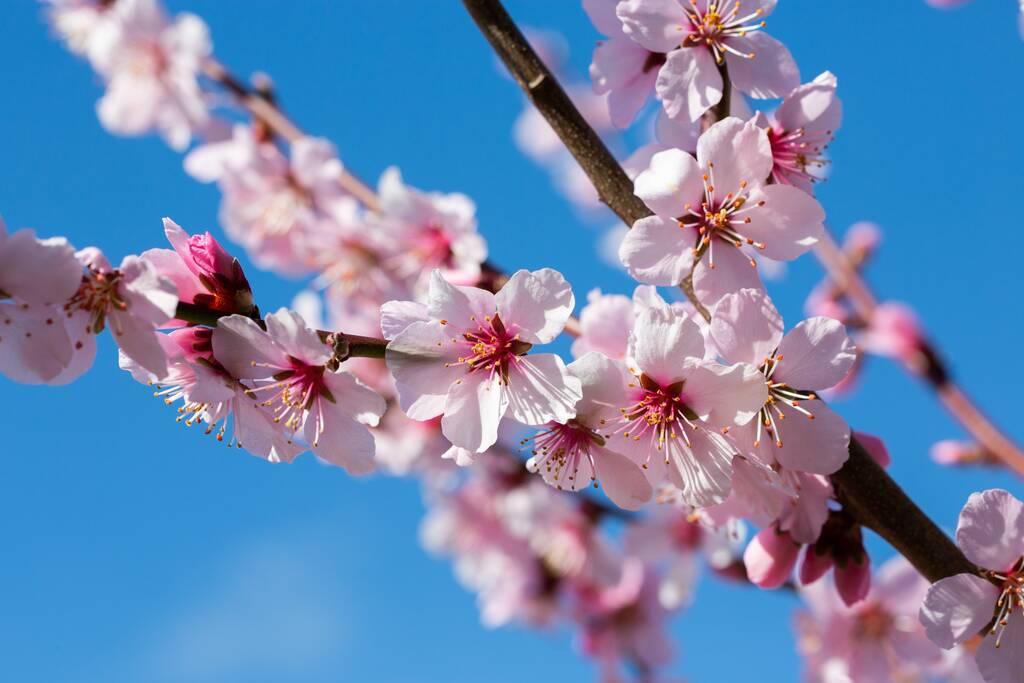The Almond (Prunus) Ingrid Tree is a highly reliable almond variety that combines both ornamental beauty and culinary value, making it one of the most rewarding choices for UK gardens.
As one of the earliest flowering fruit trees, Almond Ingrid produces masses of light pink blossom in early spring, often before many other plants begin their seasonal display. This creates not only ornamental appeal but also an excellent source of nectar for pollinators such as bees. The blossom, delicate yet striking, makes this tree a charming feature in both ornamental and productive gardens.
By late summer through early autumn, Ingrid develops its signature almond crop. The nuts form inside pale green, softly textured outer hulls. Once harvested and dried, the kernels offer a rich, distinctive flavour, making them perfect for a wide range of uses. Almonds can be eaten fresh or toasted, added to savoury dishes, or used in desserts. They are also ideal for making almond milk, butter, flour, or paste, offering versatility in modern and traditional cooking.
Unlike many other almond varieties, Ingrid has proven to be the most dependable cropper under UK conditions, with better resistance to the climate and improved yields. It shows a degree of resistance to leaf curl and tolerates a variety of soils, provided they are moderately fertile and well-drained. A sunny, sheltered position ensures the best flowering and fruiting performance. Gardeners should take care to protect early blossom from late frosts and safeguard ripening nuts from birds, which find them highly appealing.
Almond Ingrid’s dual-purpose nature makes it especially valued. Not only is it a productive nut tree, but it also serves as an ornamental feature. Its early-season blossom brightens the garden, while its compact size makes it manageable for home growing. With an eventual height of around 3–4 metres, it fits neatly into medium gardens and can also be incorporated into orchard-style planting.
The history of almonds stretches back thousands of years. Believed to have originated in western Asia, almonds travelled along ancient trade routes such as the Silk Road, eventually becoming prized across Europe. They were even found in the tombs of Egyptian pharaohs, used as both food and offerings. Today, almonds remain one of the world’s most popular nuts, valued for both their taste and health benefits.
By planting Almond Ingrid, UK gardeners can enjoy this heritage while also benefiting from a modern, reliable cultivar that thrives in local conditions.
The Almond Ingrid Tree reaches an approximate height of 3–4 metres with a spread of around 3 metres after 10 years, making it ideal for medium-sized gardens or small orchards. Its manageable size allows it to be grown as a specimen tree, incorporated into a mixed border, or included in fruiting collections.
Despite its relatively compact dimensions, Almond Ingrid provides excellent ornamental value through its profusion of spring blossom and reliable nut production. Its upright, spreading form ensures balanced growth and an attractive structure throughout the year. With regular care, including pruning after harvest to maintain shape, this tree remains both productive and decorative. Its modest size makes it accessible for home growers seeking both beauty and utility.





